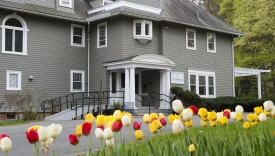Architectural Studies 356 - Baroque Art
(Offered as ARHA 356, ARCH 356, and EUST 356.) After the canonization of the notion of artistic genius in the Italian Renaissance and the subsequent imaginative license of artists known as Mannerists, phenomena sponsored throughout Europe by the largesse of merchants, courtiers, aristocrats, princes, and Churchmen alike, a crisis occurred in European society--and art--in the second half of the sixteenth century. Overturned dogmas of faith, accompanied by scientific discoveries and brutal political changes, brought about the reconsideration of fundamental values that had undergirded many facets of life and society in Europe at the beginning of the seventeenth century, the starting point of this course. Unexpectedly, these upheavals led to a renewed proliferation of innovative art. In this century of remarkably varied artistic production, paradoxes abounded. Some artists sought the illusion of reality by imitating unimproved, even base nature through close observation of the human body, of landscape, and of ordinary, humble objects of daily use, as others continued to quest for perfection in a return to the lofty principles implicit in ancient artistic canons of ideality. More than ever before, artists explored the expression of passion through dramatic narratives and sharply revealing portraiture, but, famously, artists also imbued art meant to inspire religious devotion with unbounded eroticism or with the gory details of painful suffering and hideous death. They depicted dominating political leaders as flawed mortals--even satirized them through the new art of caricature--at the same time that they developed a potent and persuasive vocabulary for the expression of the rulers’ absolutist political power. This class, based on lectures but regularly incorporating discussion, will examine in depth selected works of painting, sculpture, and architecture produced by artists in the countries which remained Catholic after the religious discords of this period-e.g., Caravaggio, Bernini, Poussin, Velázquez, and Rubens in Italy, France, Spain, and the Spanish Netherlands--as well as engaging the cultural, social, and intellectual framework for their accomplishments. Upper level.
Requisite: One other course in art history or consent of the instructor. Limited to 25 students. Fall semester. Professor Courtright.


